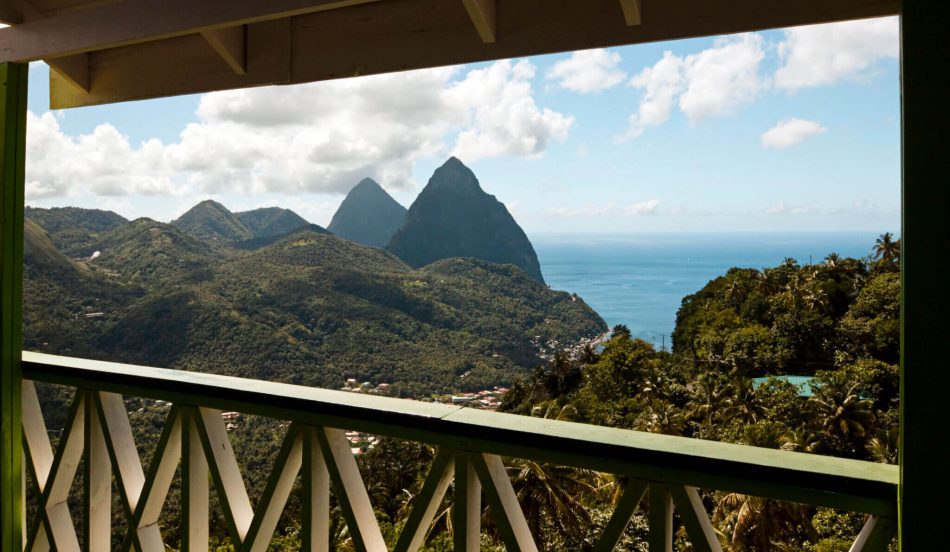St. Lucians protest development on The Pitons
By Bert Wilkinson From Caribbean Life

The Pitons in St. Lucia. Getty Images/ByMPhotos
There is perhaps no more famous heritage or tourism landmark in the Caribbean than the Pitons in St. Lucia. The volcanic twin mountain peaks jutting out at the edge of the Atlantic are a protected heritage site by the United Nations body dealing with science, culture and education and related activities. Tourists often gasp as this beautiful product of nature. The local beer is named after the peaks of Gros Piton, rising majestically on the edge of turquoise waters at 2,530 and Petit Piton at 2,438 feet respectively. Both by air at low altitude and by sea, these two are just about the first landmarks a visitor sees as he approaches Castries, the capital of this idyllic Eastern Caribbean tourist island.
But even as the peaks and surrounding area continue to attract thousands of tourists each year, a spirited effort is today being made by rights activists to reverse all commercial activities near the peaks and its surrounding areas. Until a few years ago, successive governments had rejected applications from billionaire developers to construct private and even commercial buildings, reiterating to applicants that it was a world heritage or protected sight whose pristine nature must be preserved at all costs.
Back in 2015, however, the Kenny Anthony-led Lucian government surprisingly granted approval to an application from the Rossi billionaire family linked to the Dollarama Chain in Canada to develop an eco-friendly private property and villas for high end tourism purposes.
Locals had for decades assumed that no commercial construction whatsoever could have been lawfully permitted in the area as the Management Authority (PMA) and the state’s Development Control Authority (DCA) would simply step in and scrub all plans. That is until the previous application which, as widely expected was mysteriously rejected was eventually approved, paving the way for construction of a massive complex. Former PM Anthony has admitted in public interviews that part of the land being used actually falls in the off limits area. Another portion of it was privately owned and sold to the Canadians, triggering a simmering furor.
Locals say the construction had blocked public access to the beach and surrounding areas and if they had known that permission was ever possible in the area, locals should have been given the chance to be first in line. They fear that St. Lucia could lose its protected area designation because of commercial activity.
Today, activists are using social media platforms like Tic Tok to ratchet up opposition to the current state of affairs and to any other in the future, alleging that local authorities have acted rather suspiciously in granting the approvals.
As opposition to the project grows, a government statement at the time indicated that “at no time was any aspect of the development in question approved that would threaten the designation of the Pitons Management Area as a World Heritage Site.
So years after the previous government had approved commercial activities at the world renowned site, activists are staging a rearguard effort to reverse the situation even as they face an uphill tasks given the passage of time.
For more on this story go to: Caribbean Life





